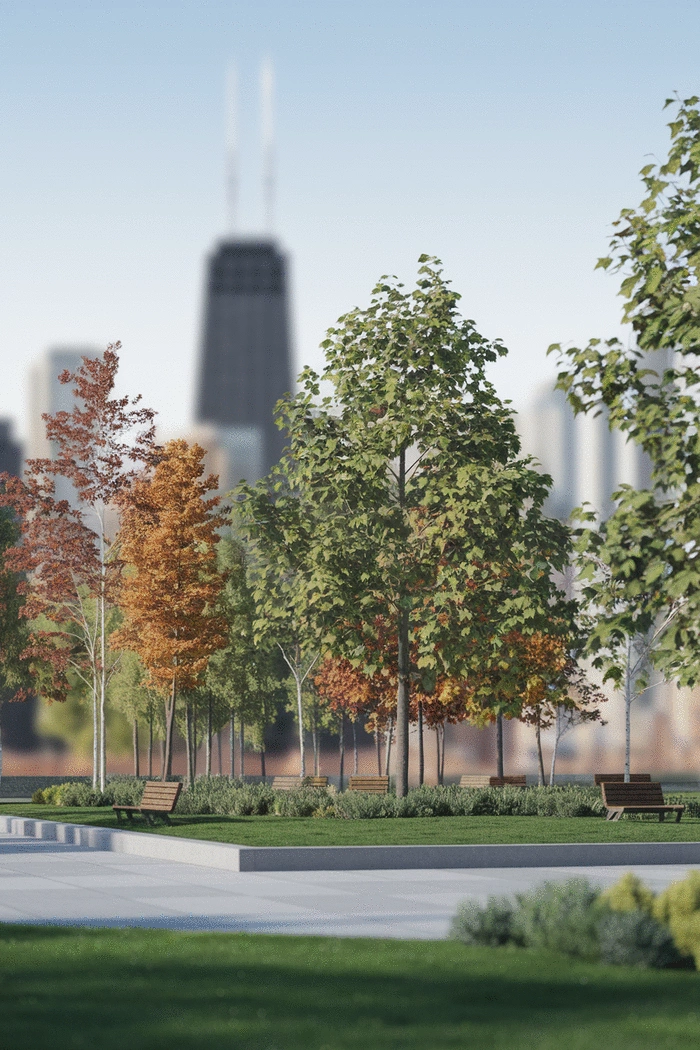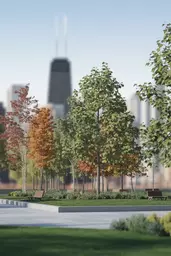Enhanced Resilience
Diverse forests withstand pests and diseases better, leading to healthier ecosystems.
Subscribe to get expert tips and the latest insights on tree care and urban greening directly to your inbox.
Posted on: 2025-10-27
By: Keira Vallejo
Did you know that urban tree diversity is crucial not just for aesthetics, but for the health of entire ecosystems? By understanding its significance, we can make informed decisions about urban planning and conservation. Let's explore the essential lessons that emerge from this vital subject.
The significant advantages of urban tree diversity include enhanced resilience, improved air quality, and better stormwater management, as illustrated in the visual below.
Diverse forests withstand pests and diseases better, leading to healthier ecosystems.
Different trees absorb various pollutants, contributing to cleaner air.
Tree roots absorb rainwater, reducing runoff and enhancing water quality.
Diverse trees create habitats for various wildlife, supporting urban biodiversity.
Have you ever walked through a city park and marveled at the variety of trees? From towering oaks to delicate dogwoods, urban tree diversity is not just a visual treat; it's essential for creating healthy ecosystems. In this section, we’ll explore what urban tree diversity really means and why it matters more than you might think!
Urban tree diversity refers to having a mix of different tree species in city landscapes. Just like a diverse garden is more resilient, cities benefit from a range of tree species that can adapt to various conditions. Different trees provide unique benefits, such as improved air quality, shade, and habitats for wildlife. As I often emphasize in the Urban Canopy Blog, understanding these differences allows us to appreciate the vital role trees play in our urban environments.
To ensure these urban trees thrive, consider the benefits of professional tree care, which can help maintain their health and longevity.
So, what exactly makes a diverse urban forest? It’s all about the variety of species! Here are some key components that define urban tree diversity:
This diversity isn’t just for show! It plays a critical role in maintaining healthy ecosystems. For example, different tree species can support various insects, birds, and other wildlife, leading to a richer urban biodiversity. This diversity helps stabilize the environment, making it more resilient to changes like climate impacts.
The benefits of having a diverse urban forest are profound! Let’s break down a few key advantages:
As we cultivate urban trees, it’s essential to choose a variety that can thrive in our specific environments. This not only enhances the beauty of our neighborhoods but also aids in fostering healthier ecosystems for everyone. When I see diverse trees flourishing in our cities, it brings a sense of hope and excitement for the future!
Urban forests are not just patches of greenery; they are crucial for urban biodiversity! They provide a home to countless species, from birds and insects to small mammals. Here’s why urban forests matter:
As someone deeply invested in urban forestry, I can’t stress enough how vital it is for communities to recognize the value of these green spaces. They are not just about aesthetics; they are about nurturing life in our cities. So, let’s work together to plant a variety of trees that enrich our urban landscapes and support our vibrant ecosystems!
Here's a brief recap of the key points discussed so far:
When we think about urban trees, it's easy to overlook the incredible services they provide. These green giants do far more than beautify our city landscapes—they play an essential role in sustaining the environment. From enhancing air quality to managing stormwater, diverse urban trees contribute significantly to the health of our ecosystems.
At Urban Canopy Blog, I often emphasize the importance of understanding these ecosystem services. By recognizing how urban trees benefit our daily lives, we can better advocate for their care and maintenance. Let's explore the various services that diverse urban trees bring to our communities!
Did you know that trees are powerful allies in combating climate change? They absorb carbon dioxide during photosynthesis, which helps reduce greenhouse gases in the atmosphere. A diverse mix of tree species enhances this carbon sequestration process, as different trees capture and store carbon at varying rates.
By planting a variety of trees in our urban areas, we can maximize the carbon capture potential and help mitigate the effects of climate change. It’s a win-win for our cities and the planet!
Urban areas often experience significantly higher temperatures than surrounding rural areas, a phenomenon known as the urban heat island effect. Trees play a crucial role in cooling down our cities by providing shade and releasing moisture through a process called transpiration. This process not only cools the air but also creates a more comfortable atmosphere for city dwellers.
For more on this, consider how urban trees cool city heat, providing a natural solution to rising temperatures.
Stormwater runoff is a major concern in urban areas, leading to flooding and water pollution. Fortunately, trees are natural guardians against this issue! Their root systems absorb rainwater, reducing the amount of runoff and allowing for better water management. Additionally, trees filter pollutants from stormwater before it reaches our waterways.
By prioritizing tree diversity in urban planning, we can significantly enhance stormwater management and protect our water resources. It’s a small change that can lead to big improvements in our urban environments!
Urban forests are vital habitats for many species of wildlife. Diverse trees provide food, shelter, and nesting sites for birds, insects, and other animals. By planting various tree species, we create a rich tapestry of habitats that supports local biodiversity.
As I often discuss on Urban Canopy Blog, fostering biodiversity is essential for the resilience of our urban areas. So let’s plant trees that not only beautify our streets but also nurture the wildlife around us!
One of the most significant benefits of urban trees is their ability to improve air quality. Trees absorb pollutants like nitrogen dioxide and sulfur dioxide, making the air cleaner and healthier to breathe. A robust urban tree canopy can significantly contribute to reducing smog and other airborne toxins.
By planting and maintaining a diverse array of trees in our cities, we can ensure a cleaner, more breathable environment for all residents. Isn’t it comforting to know that trees are working hard to keep our air fresh?
The health of our urban soil directly impacts the health of our trees and, consequently, our ecosystems. Diverse tree species contribute to soil health by adding organic matter, improving soil structure, and enhancing nutrient cycling. This rich, healthy soil supports not just trees but a whole range of life beneath the surface.
Urban Canopy Blog emphasizes the need to care for our soil as we care for our trees. Healthy soil leads to healthy trees, which in turn supports a robust urban ecosystem. Let’s dig deep into this important connection and nurture our urban landscapes together!
To learn more about keeping your trees healthy throughout the year, check out our seasonal urban tree care guide.
Here is a quick recap of the important points discussed in the article:

 In urban environments, trees are often the unsung heroes contributing to our well-being and the over
In urban environments, trees are often the unsung heroes contributing to our well-being and the over
 Urban trees are essential to our cities, yet they face numerous threats from pests and diseases. Did
Urban trees are essential to our cities, yet they face numerous threats from pests and diseases. Did
 Did you know that urban tree diversity is crucial not just for aesthetics, but for the health of ent
Did you know that urban tree diversity is crucial not just for aesthetics, but for the health of ent